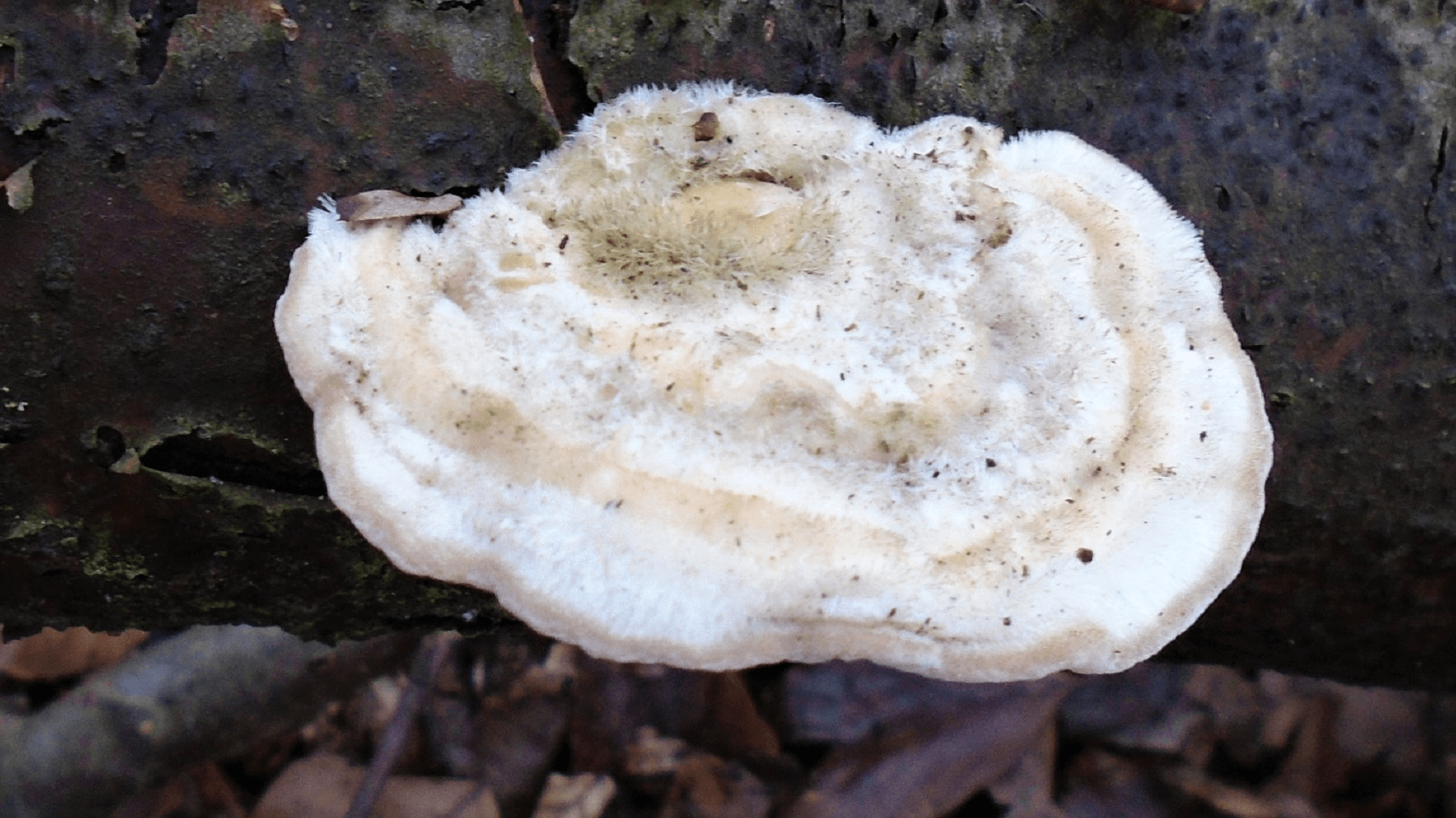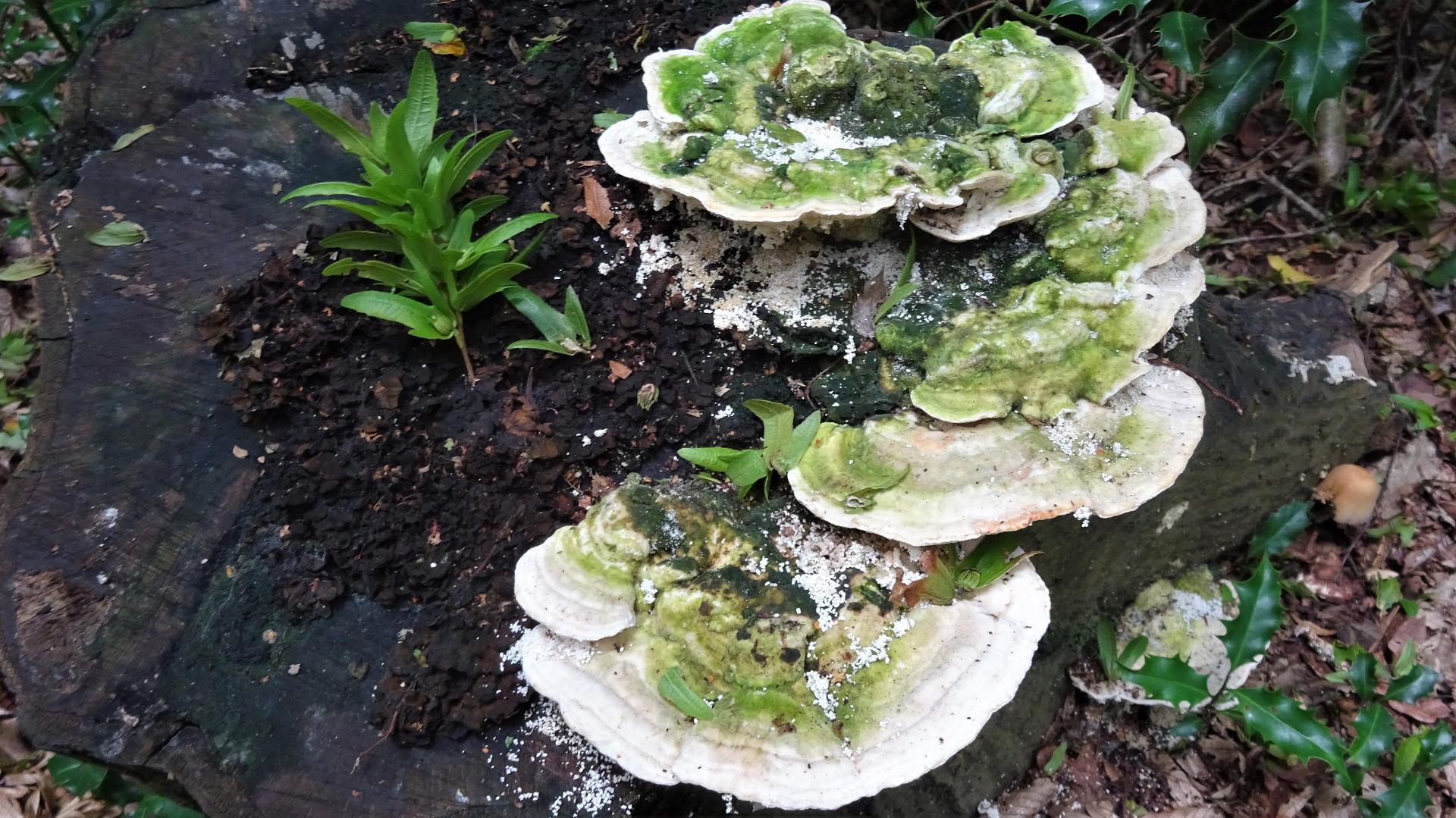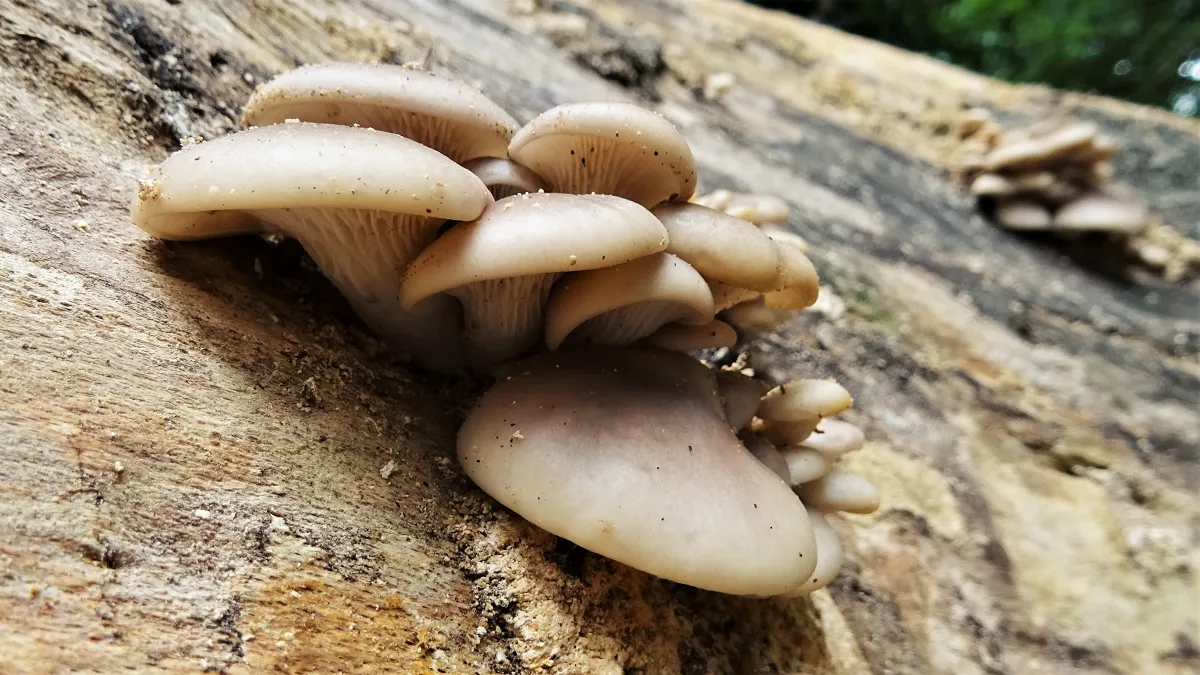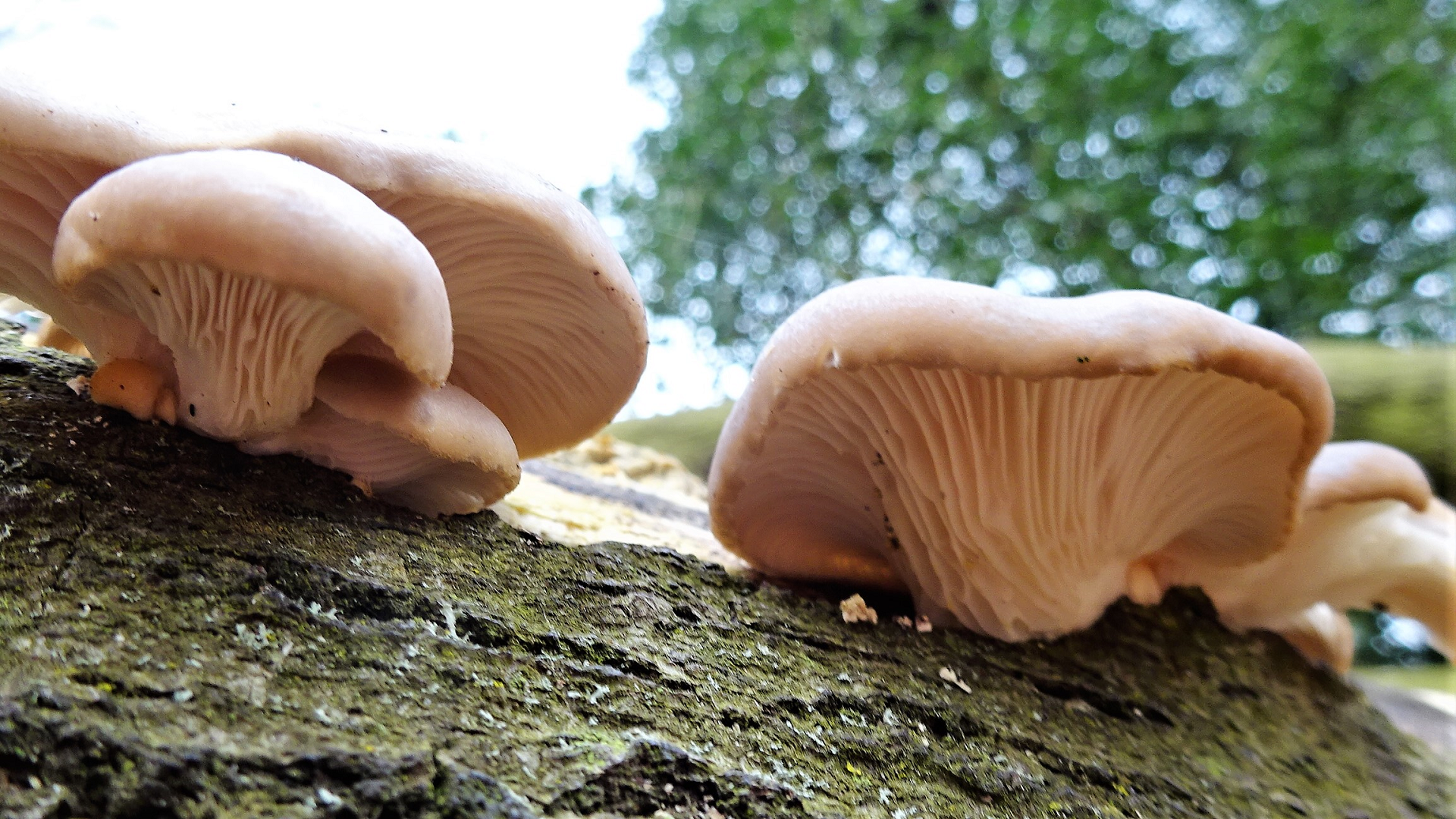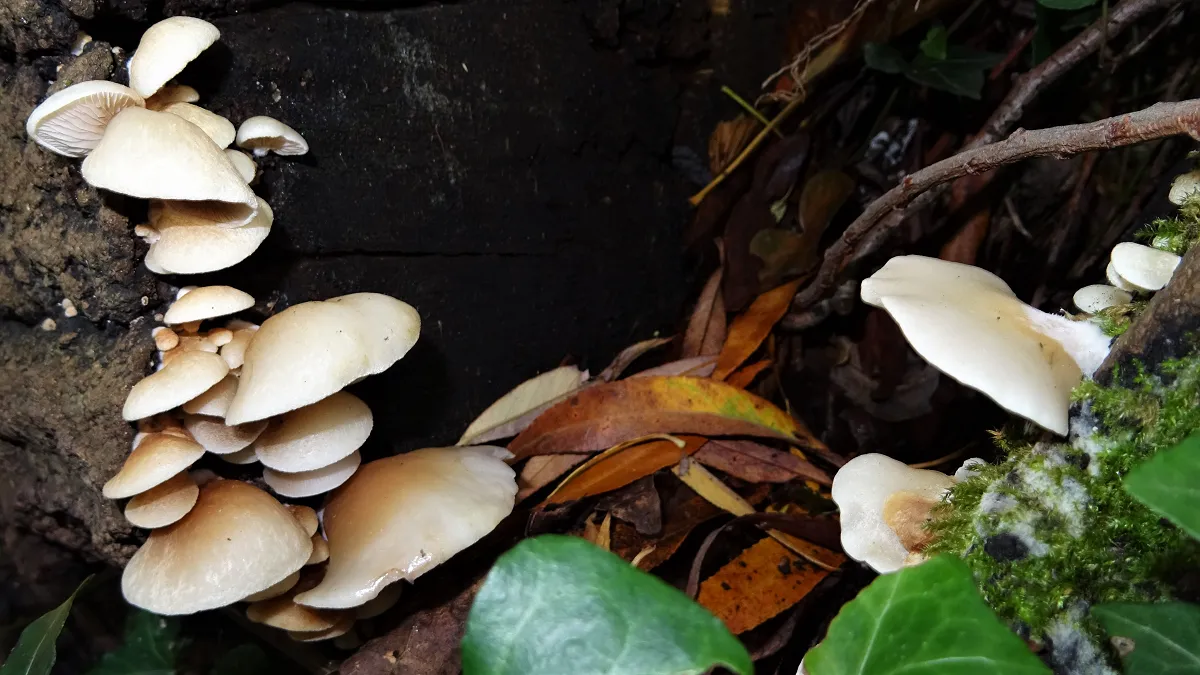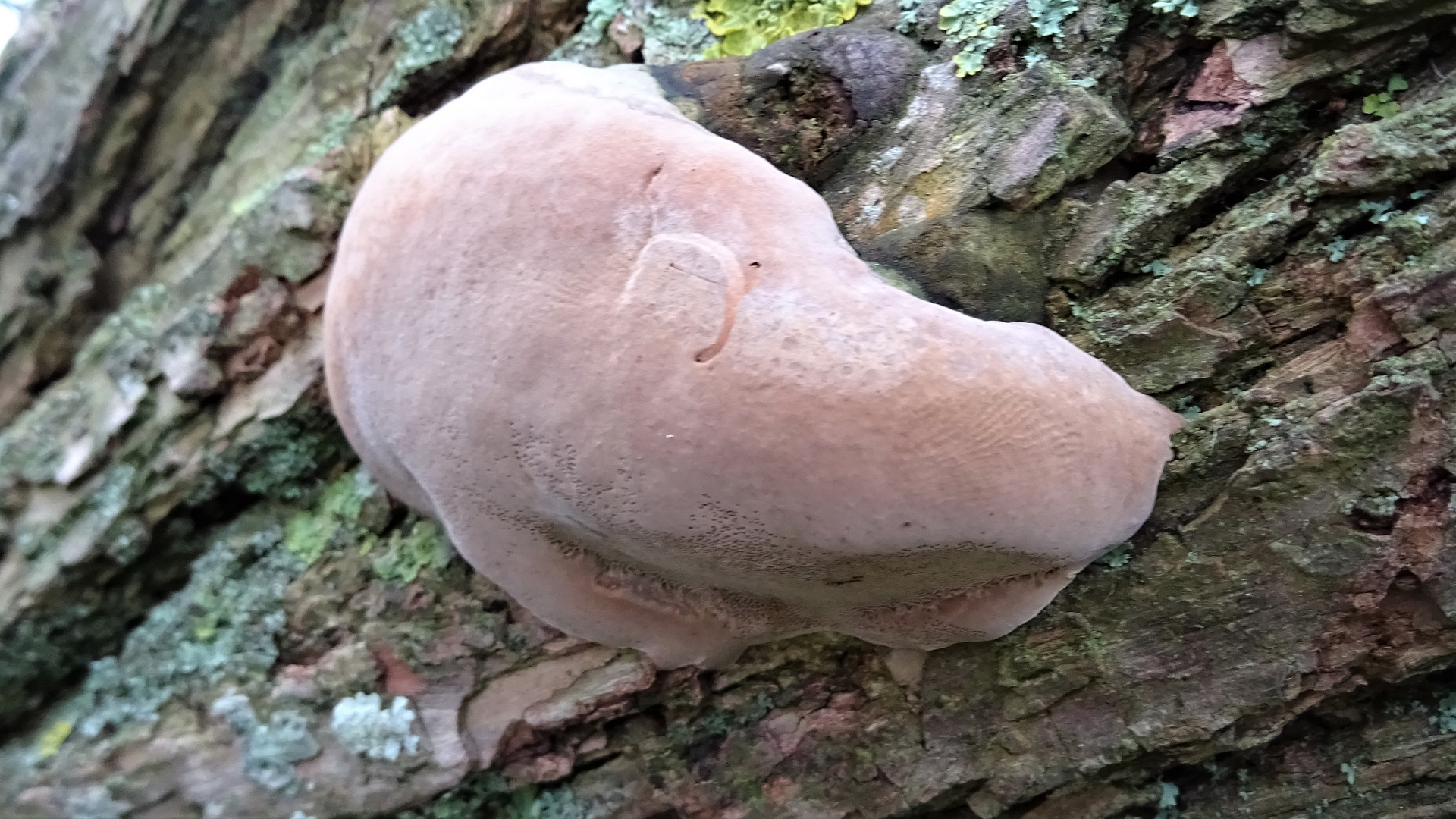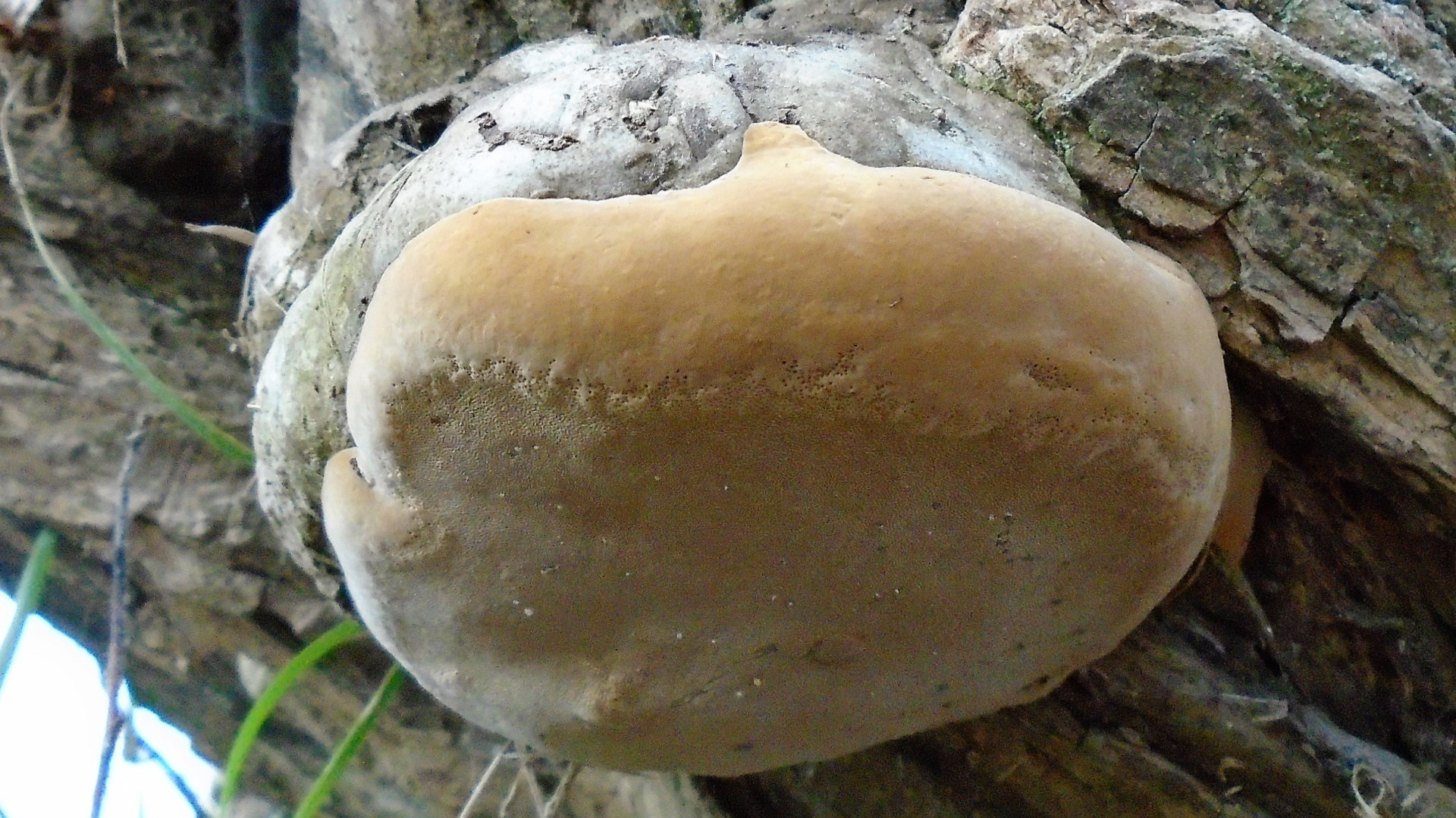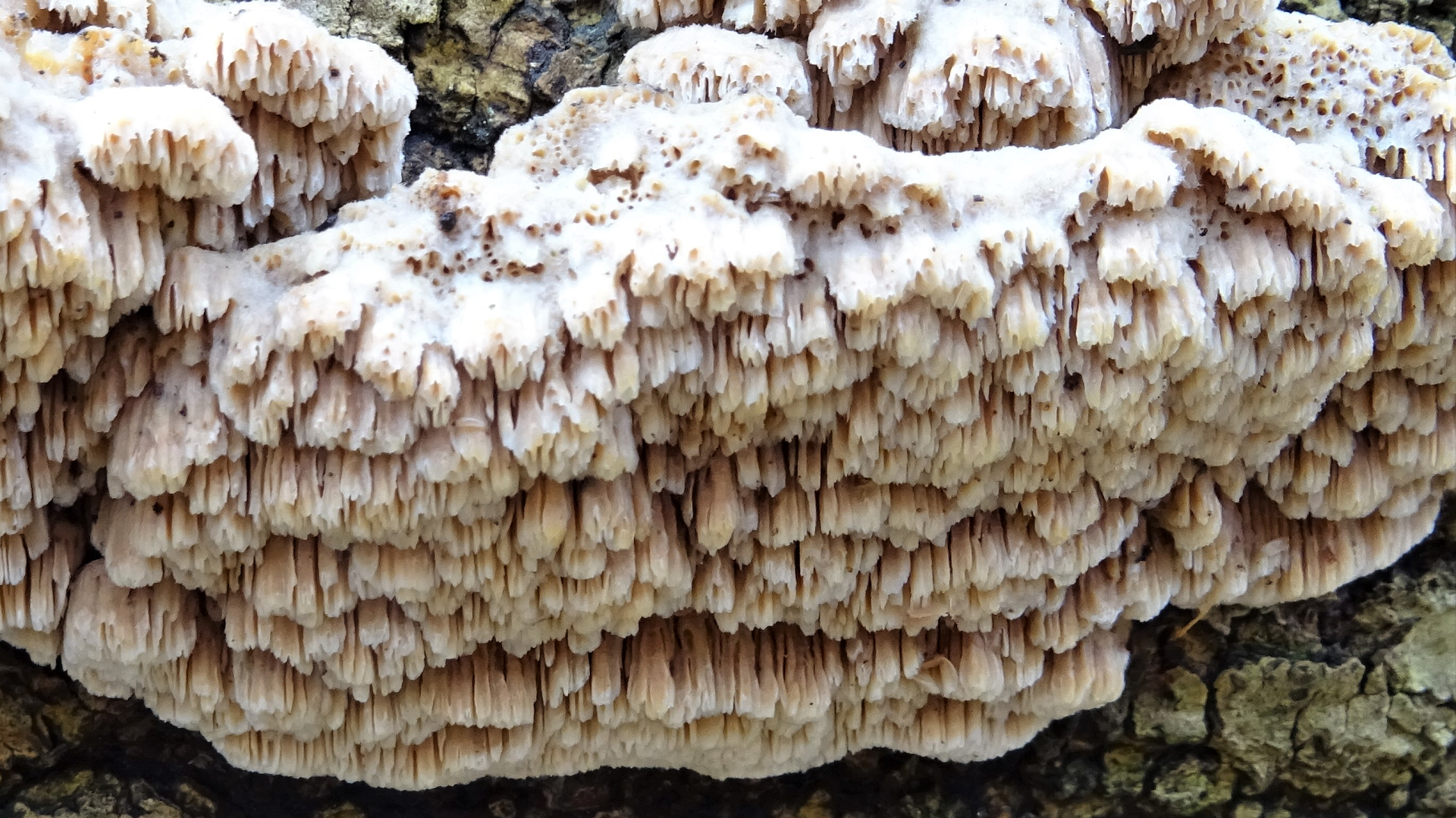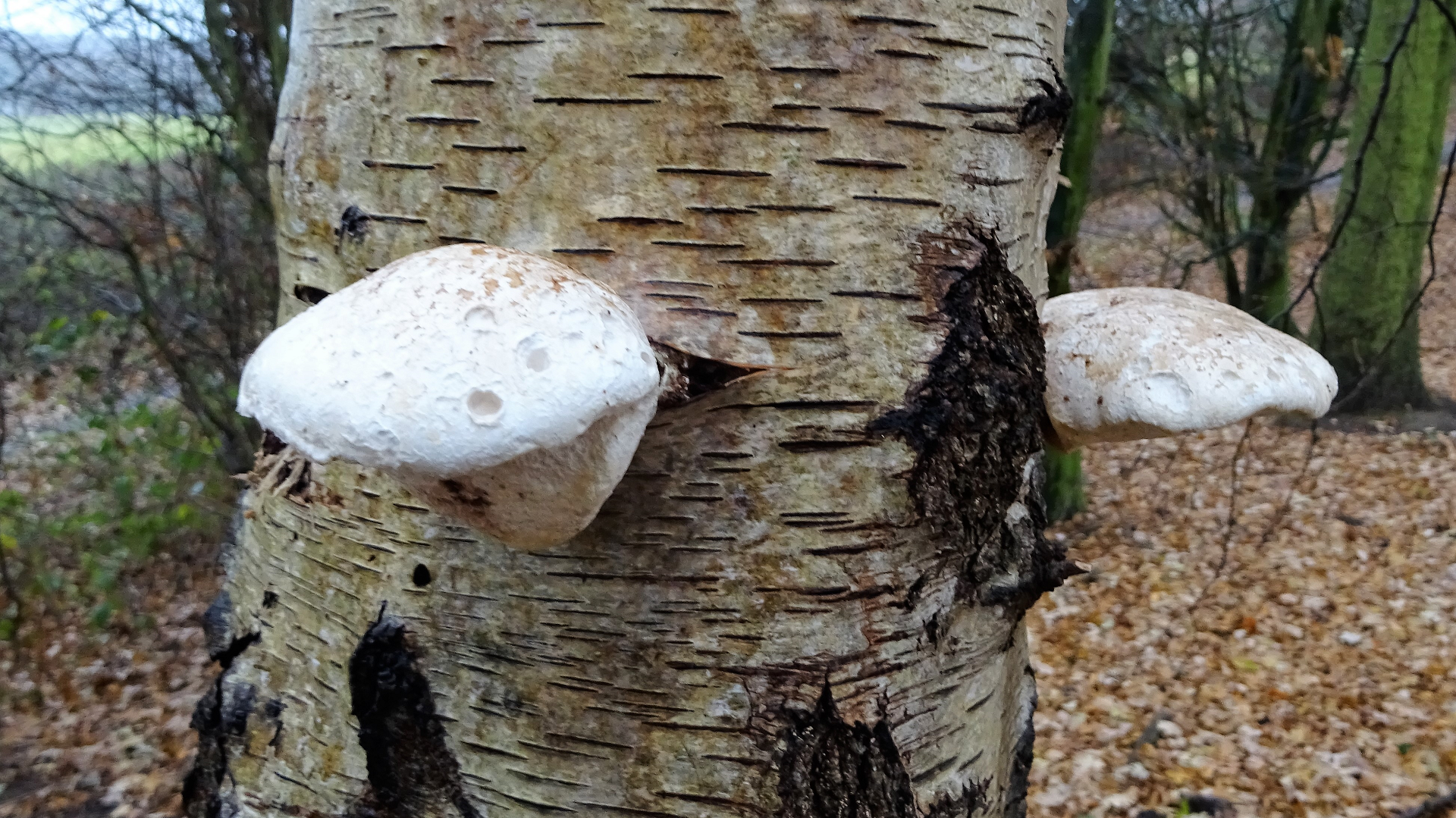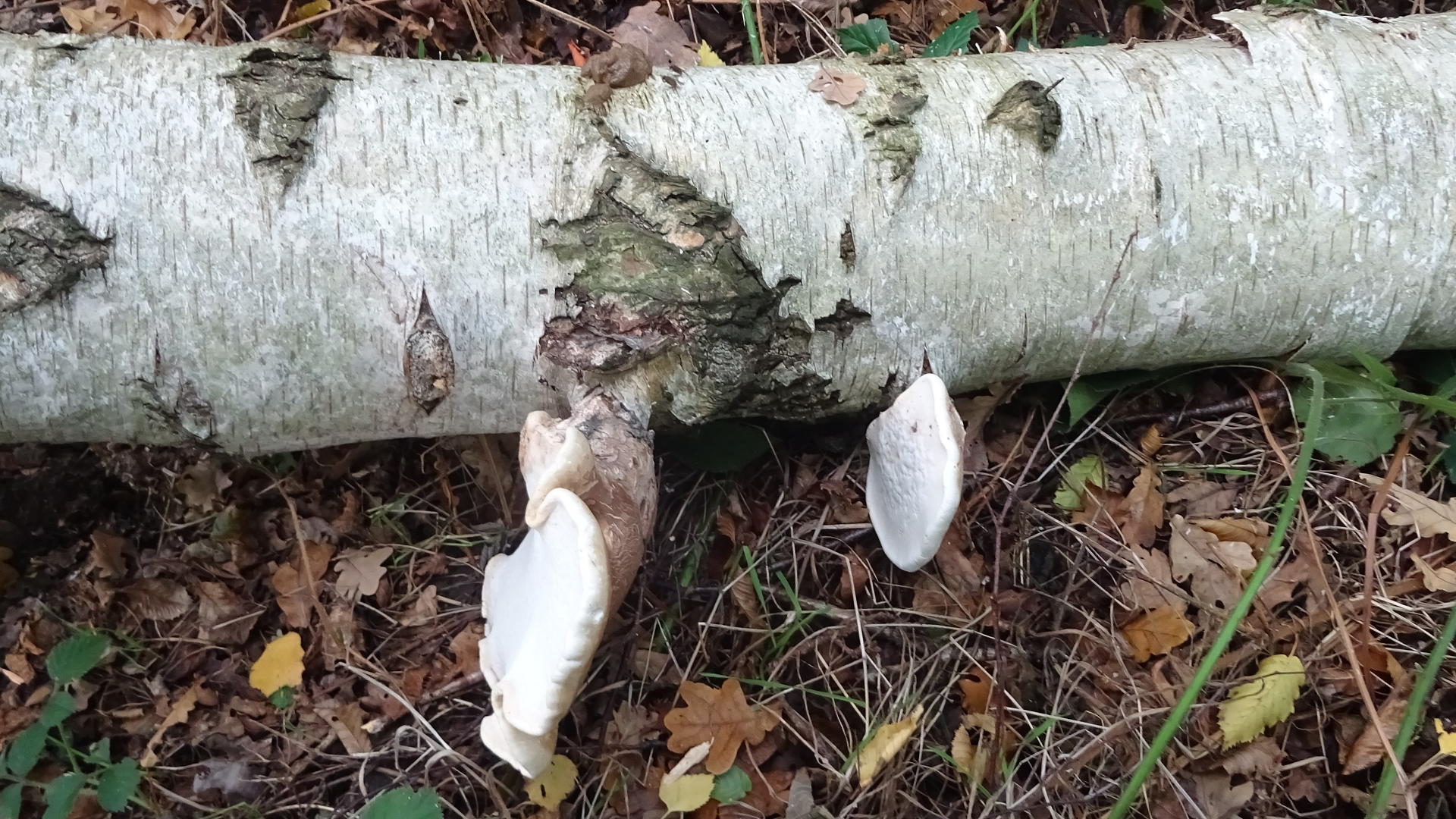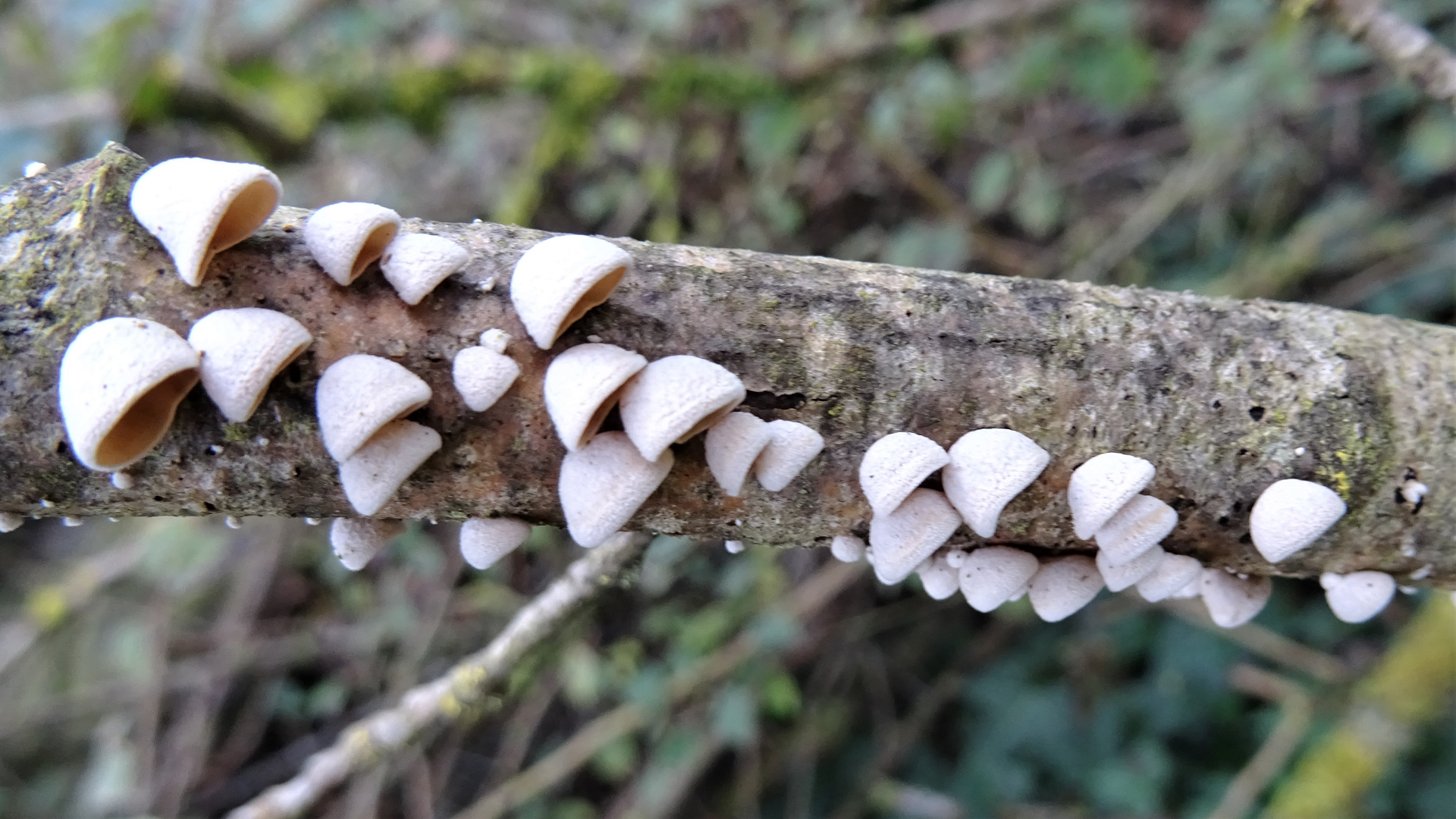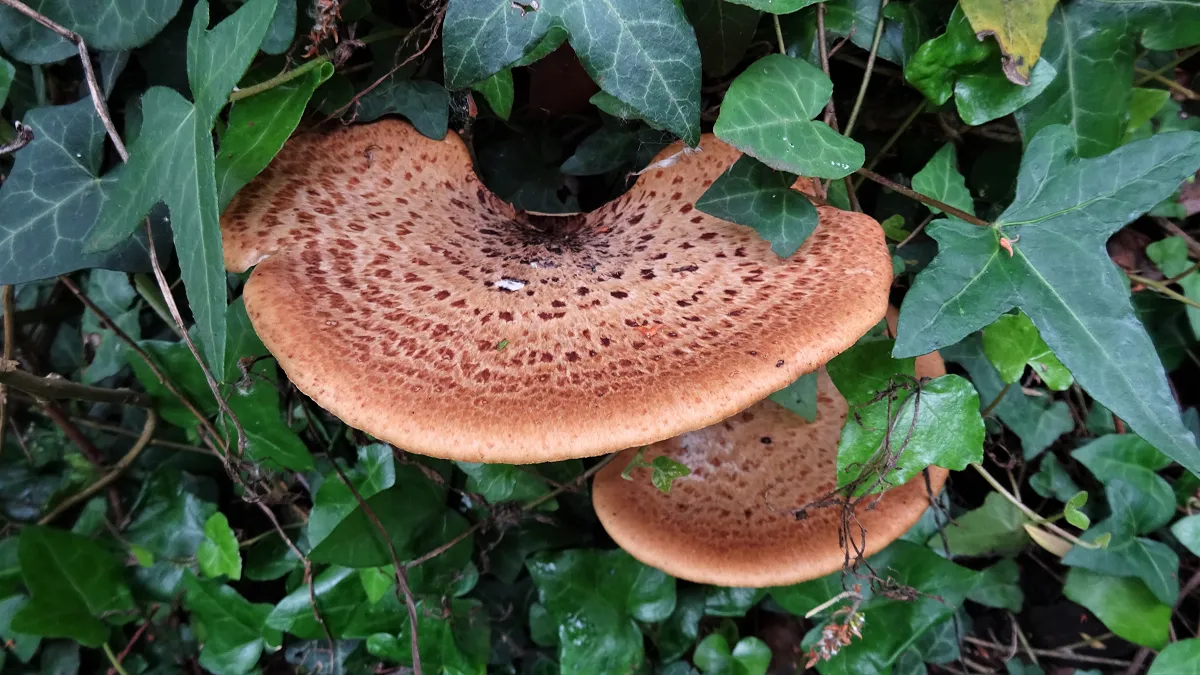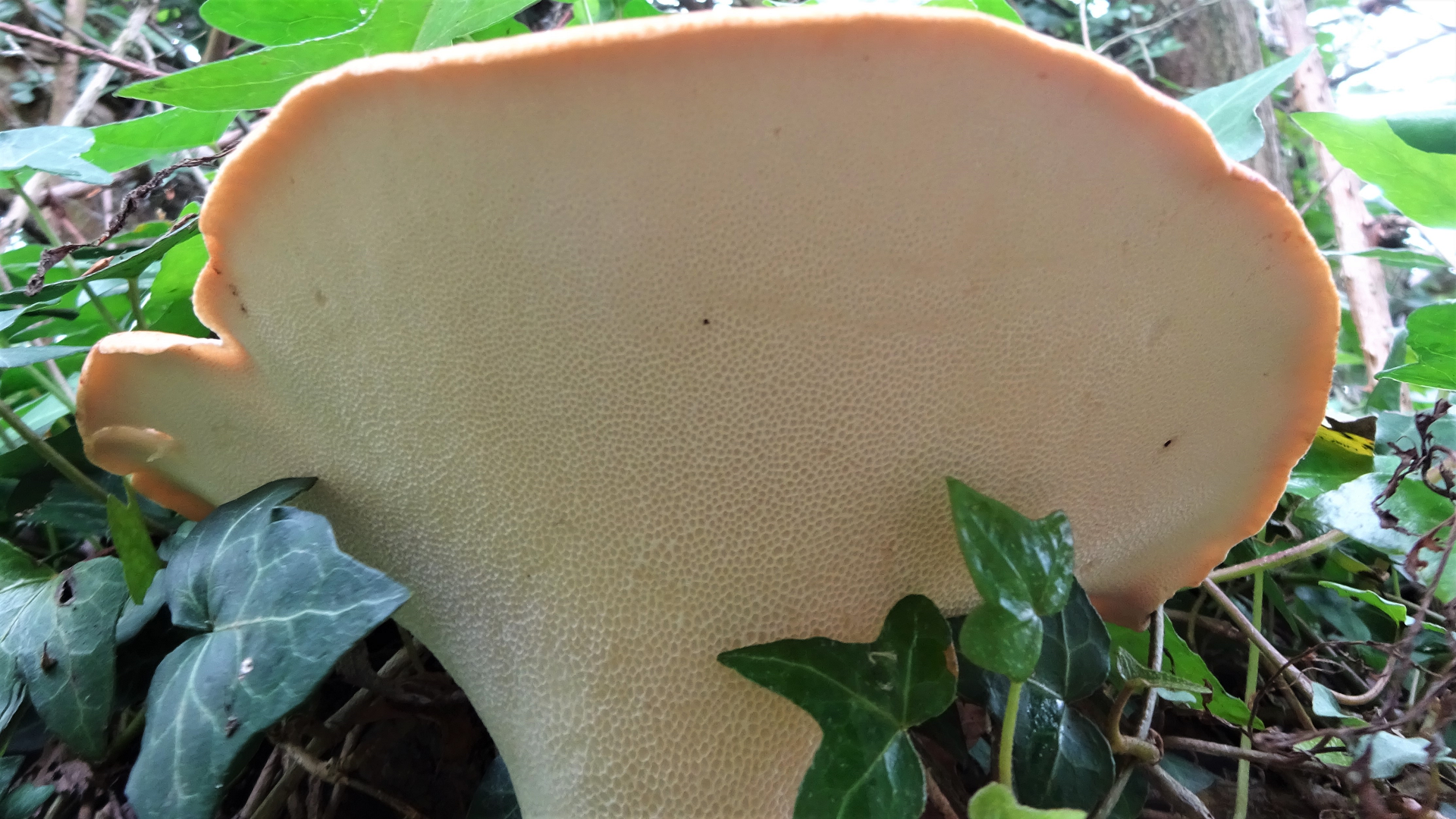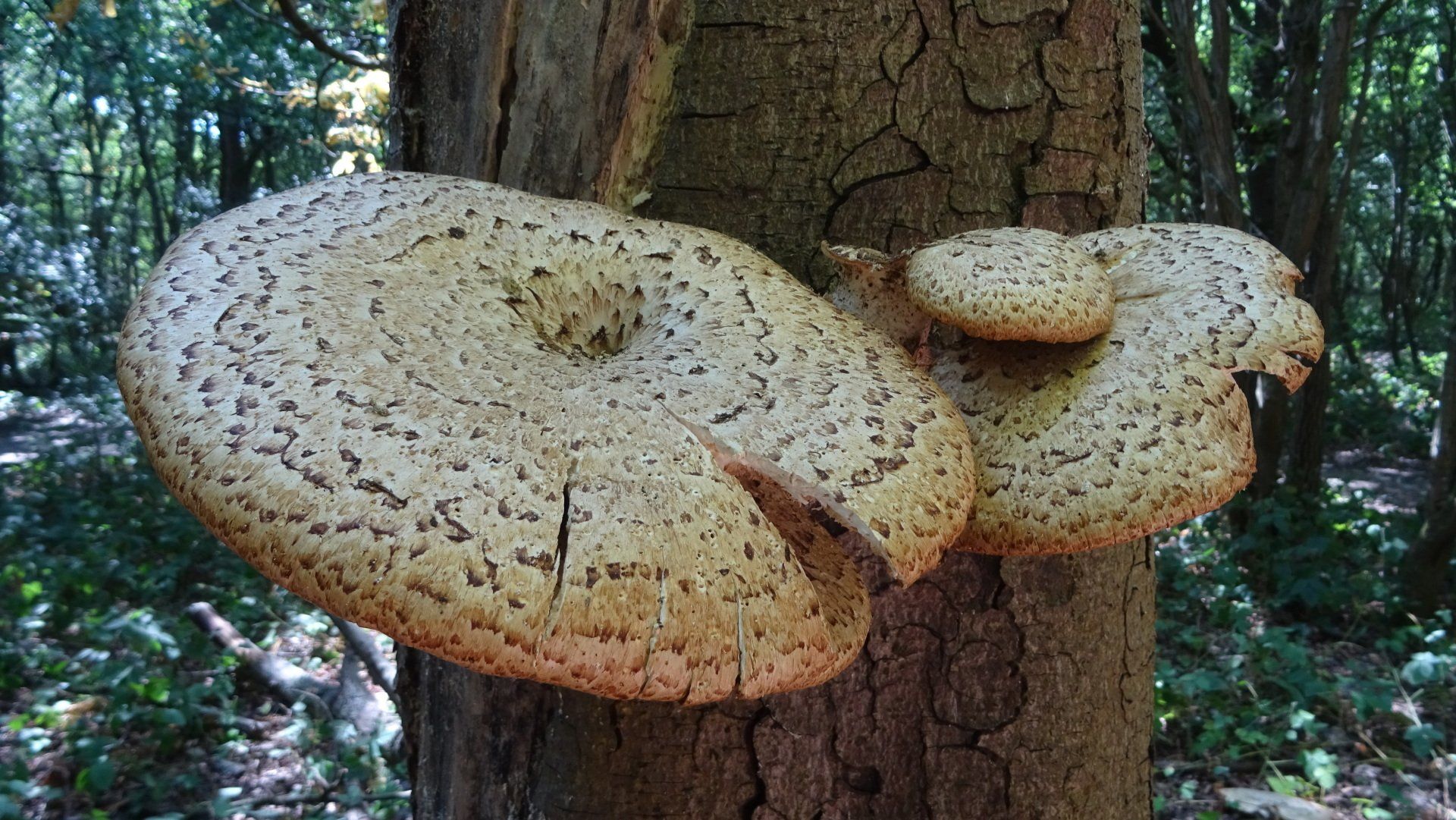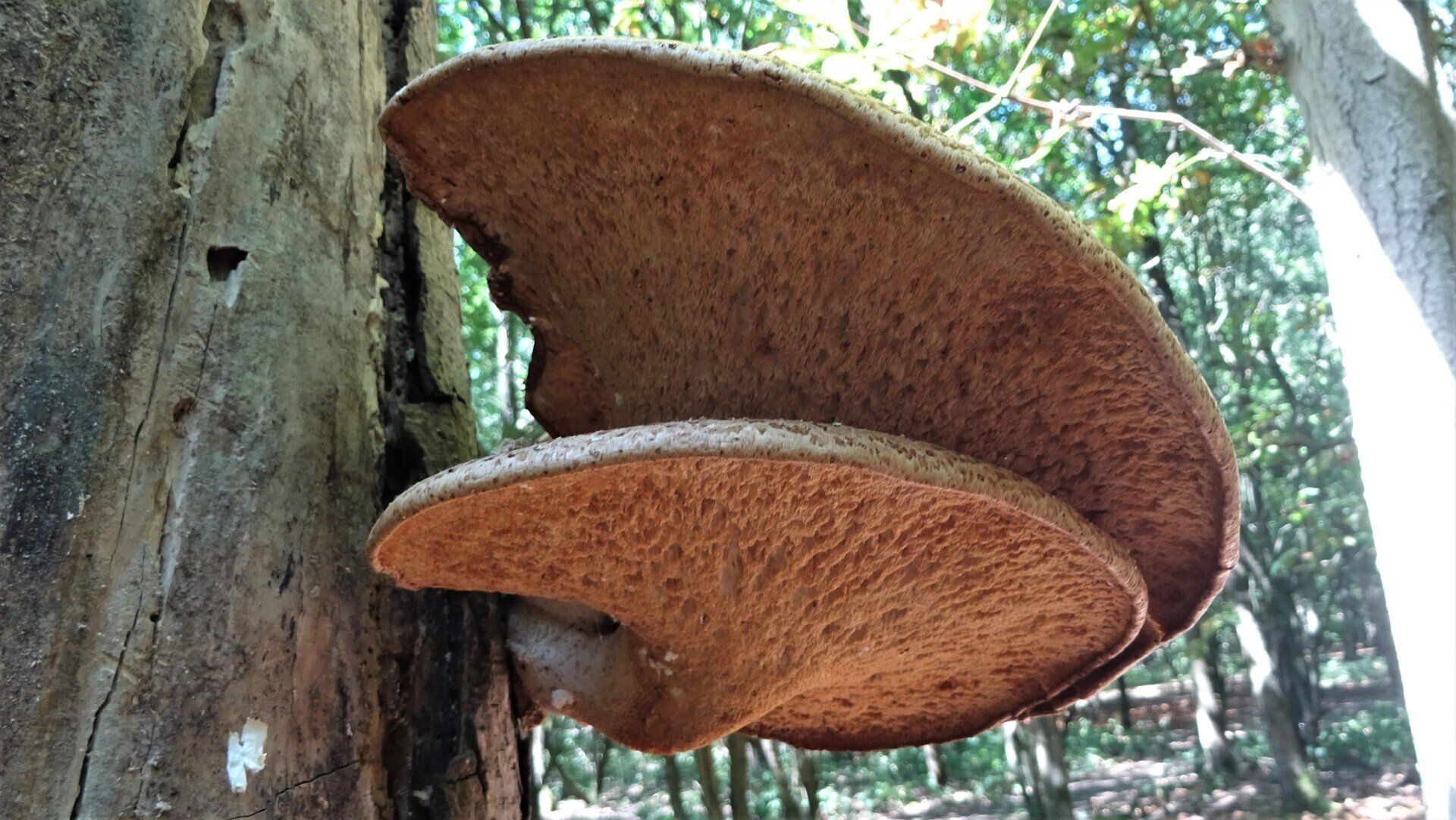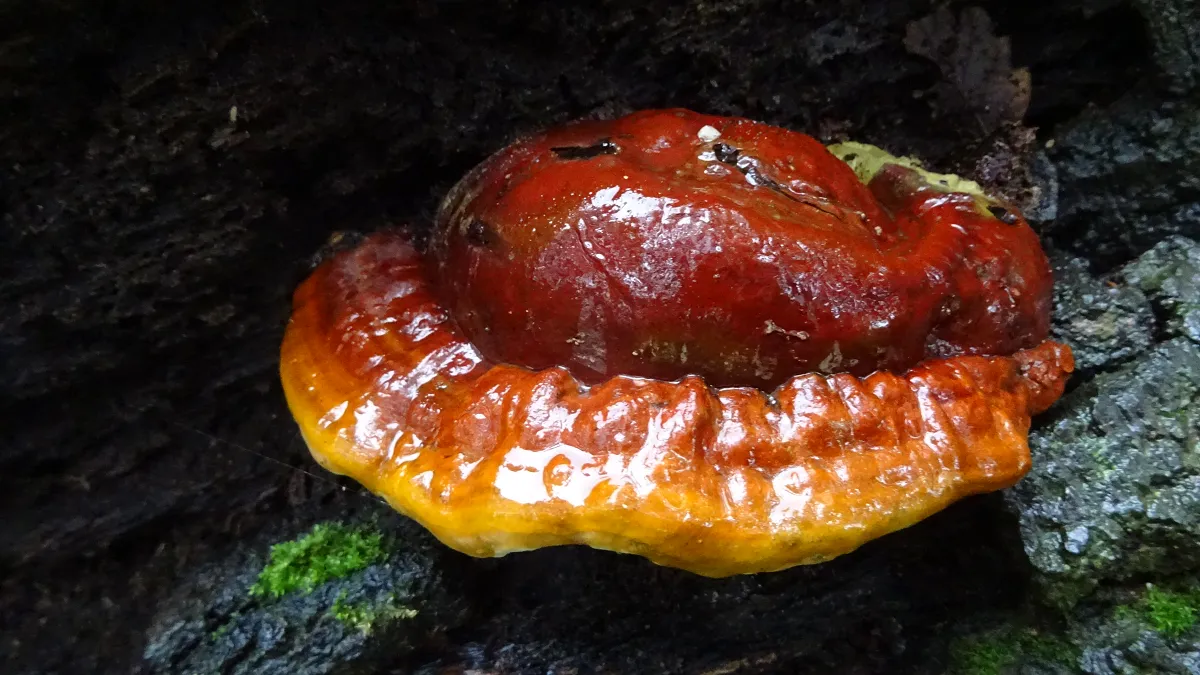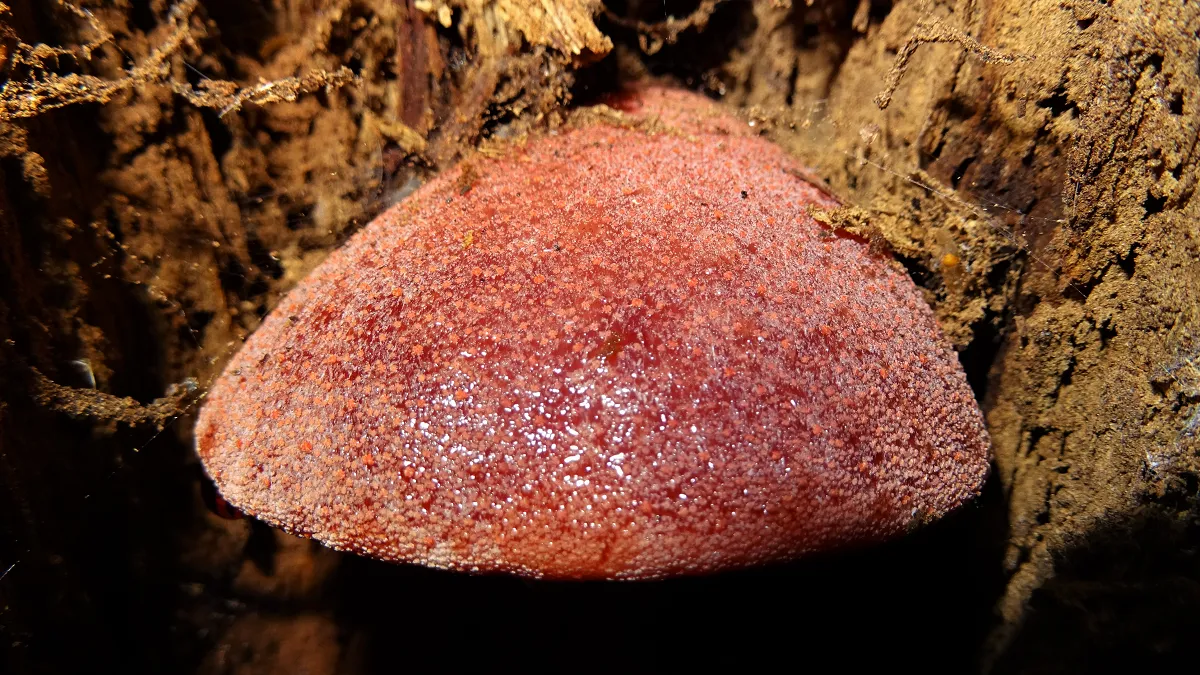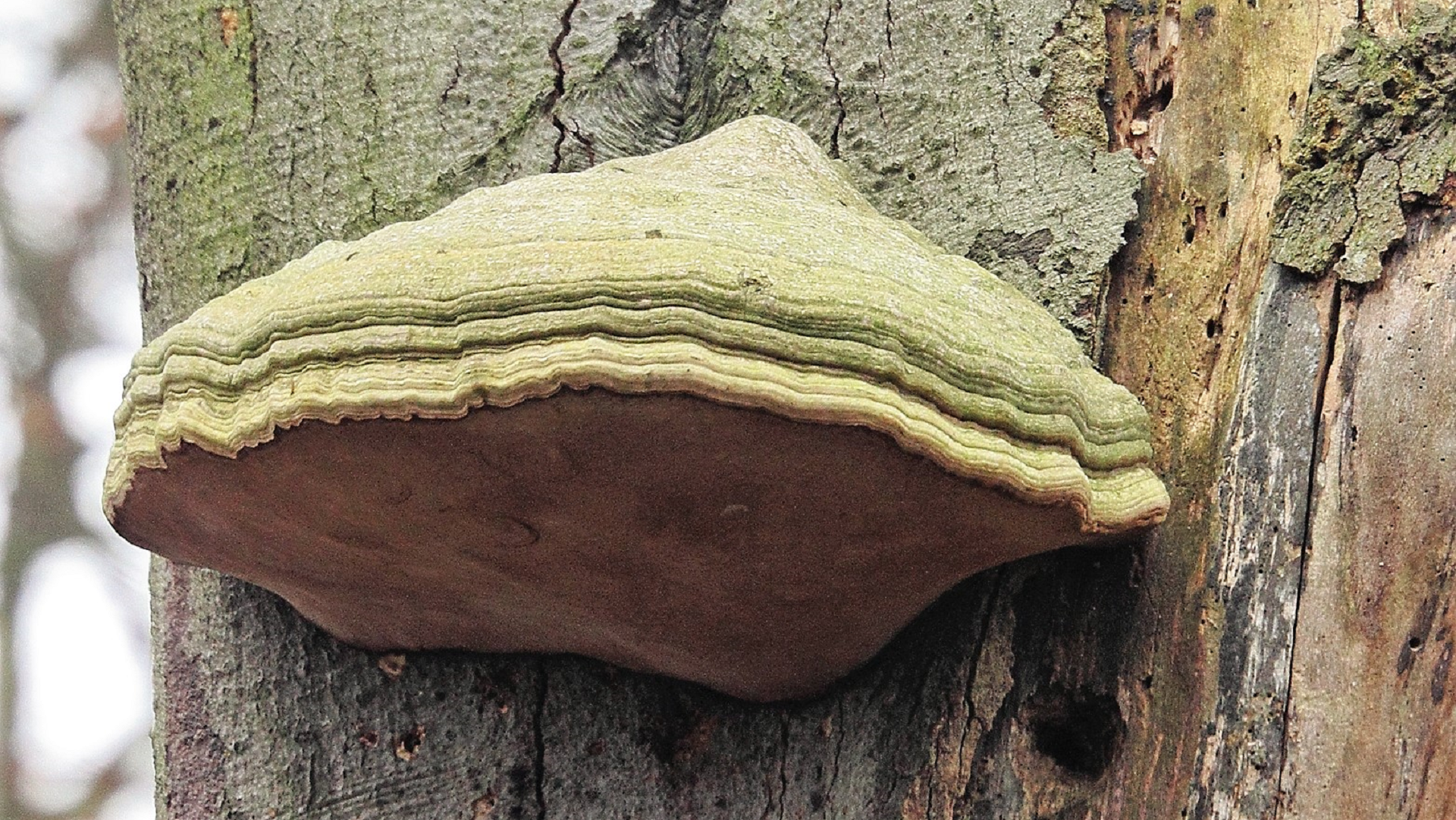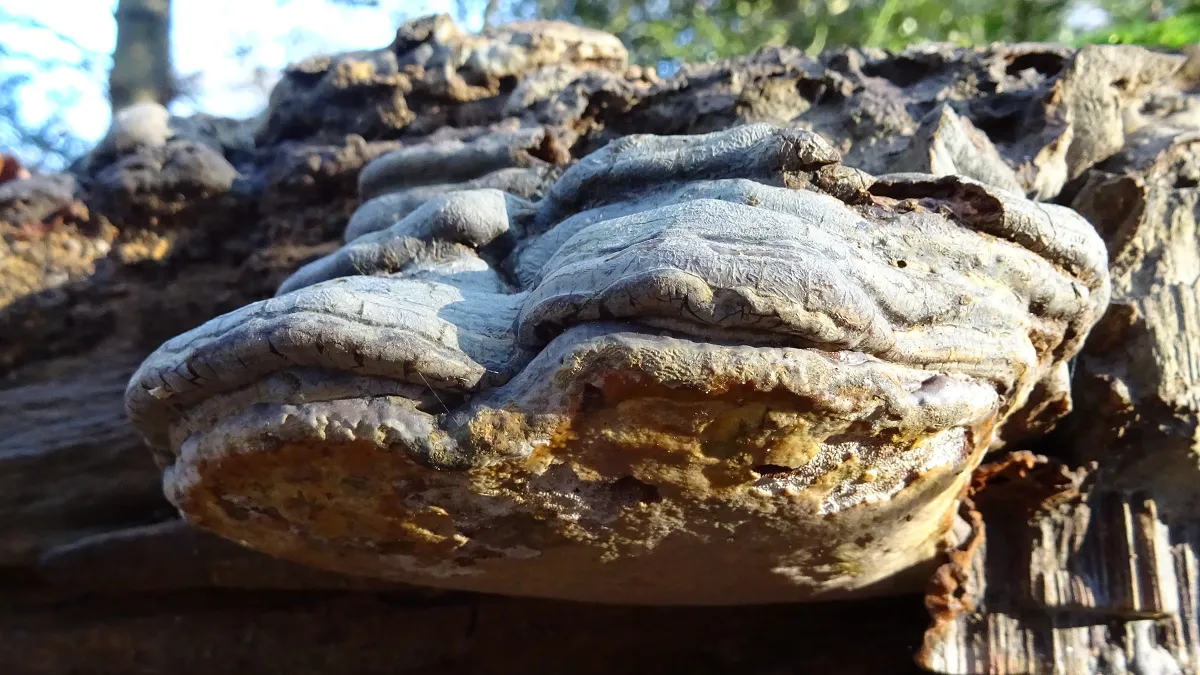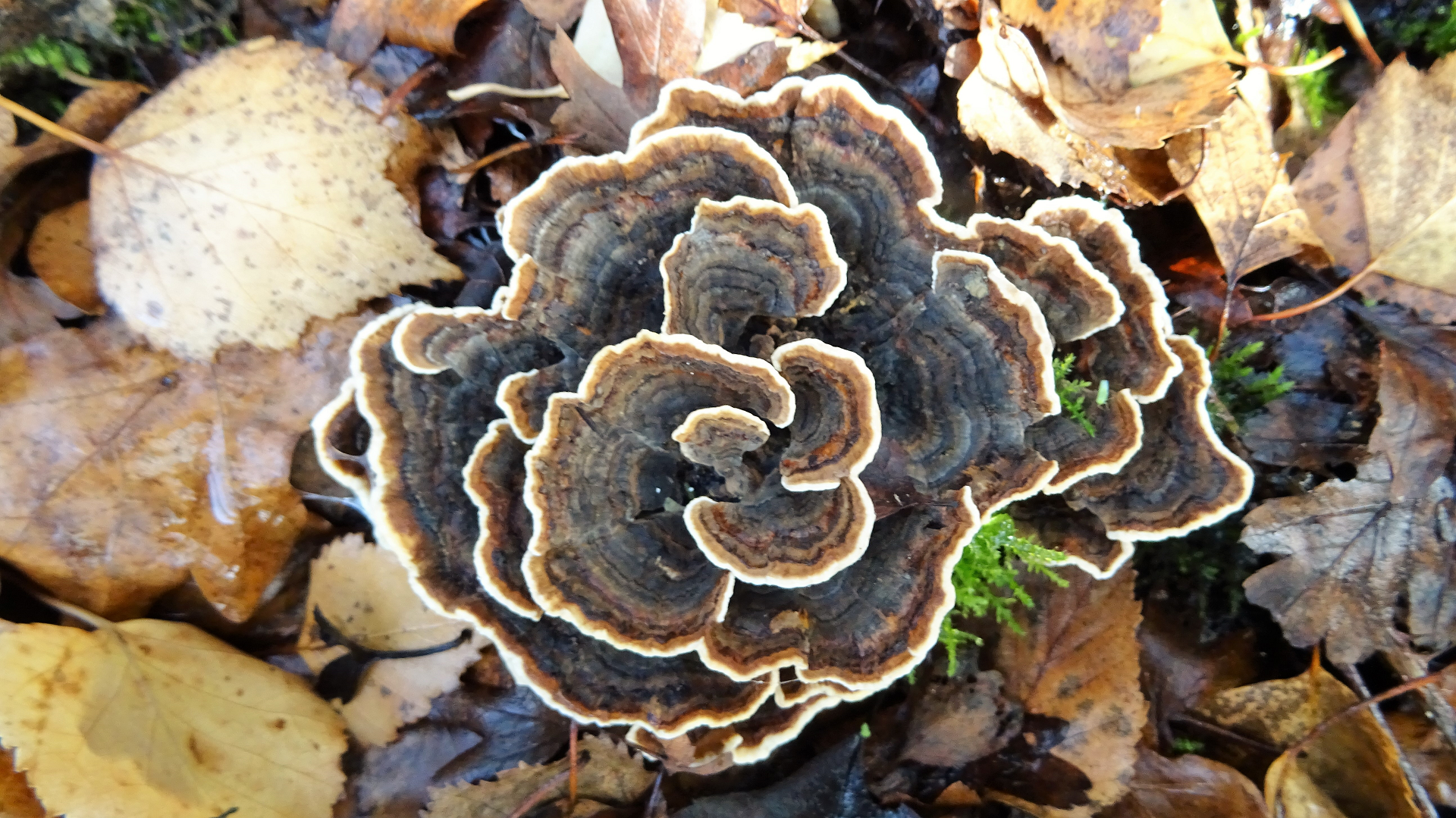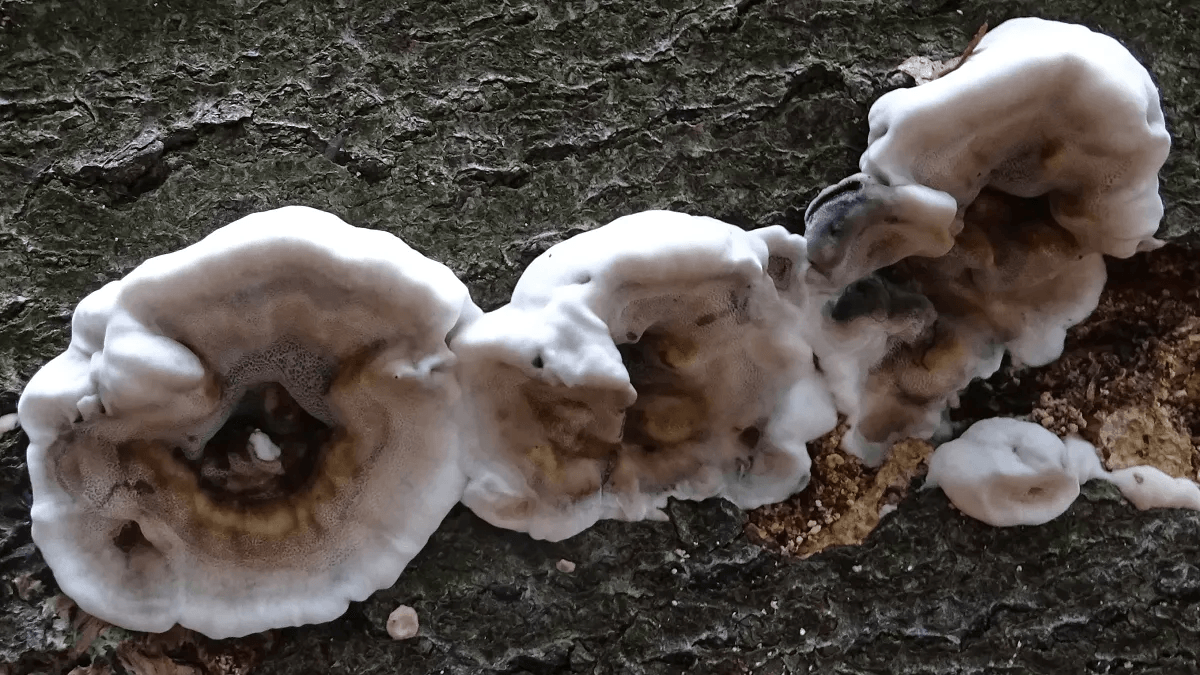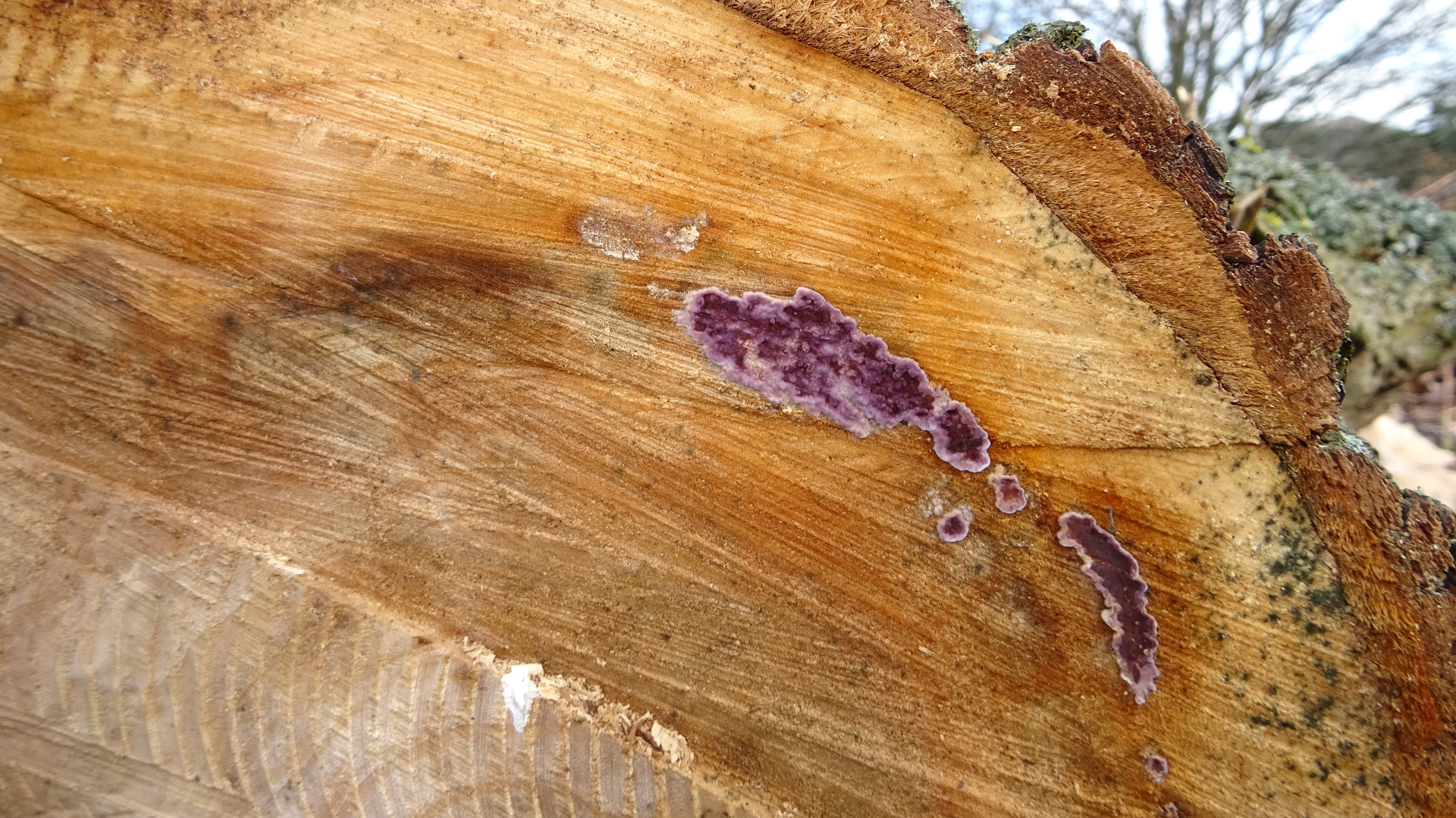FUNGI
BRACKETS AND CRUSTS
Hairy Bracket grows up to 100mm across. They are initially white or creamy with the upper surface covered in hairs. It develops concentric ridged colour zones. The area near the outer edge usually has brown or ochre coloration. The fruiting bodies gradually turn greyer before decaying.
Lumpy Bracket grows on beech stumps and other hardwoods where it causes white rot. The top is often discoloured by green algae. Unlike other Trametes fungi that have rounded pores the pores of this species are slits.
Oyster Mushrooms shell-shaped with little or no stems. The cap flattens with age often becoming split or wavy at the edge. Caps come in various shades of grey or brown, sometimes very pale, sometimes dark. They measure up to 150mm across. They grow in groups on fallen trunks and stumps of deciduous trees.
Peeling Oysterling mushrooms grow in tiers on deciduous logs and stumps during autumn. The kidney-shaped caps measure up to 6 cm across and are laterally joined to the wood with little or no stem showing. The gills are pale and crowded becoming light brown when mature. There is a thin stretchy membrane covering the cap which can be peeled away if dry enough. This can be harder to do when the caps feel slimy or sticky.
Willow Bracket is a very tough fungus associated with willow trees, seen all year round on lower trunks of older trees. It grows in concentrically ridged layers with a fresh layer forming each year. The new layers are light-brown and feel like velvet. Older layers turn grey, then blacken and often develop cracks.
Toothed Bracket, an interesting fungus that forms masses of conjoined fruiting bodies.
Blushing Bracket grows on dead wood of deciduous trees, usually Willow, Birch and Beech. The brackets measure up to 20cm across, often turning mottled reddish-brown with age. The pored lower surface is soft and easily bruises if pressed.
Birch Polypore is a common bracket which only grows on Birch trees. It has a whitish-brown cap which grows up to 20cm across.
Poplar Bells are mostly associated with growing on Poplar trees during wet spells, often seen after high winds when small branches have fallen from trees. It has no gills and dehydrates quickly and can vanish quite fast.
During warm weather
Dryad's Saddle brackets disappear within a very short time period. When growing from a root just beneath the surface it can take the form of a horn-like funnel. Fungus flies burrow into pores to lay eggs, afterwards the fungus becomes riddled with maggots and turns into a smelly mess. The common name is due to it looking similar to saddles used by mythical wood-nymphs.
Lacquered Bracket is smooth, shiny, and grows mainly on stumps and buried roots of broad-leaf trees. It can been found all year round. The brackets are kidney-shaped and have a wavy edge. Initially pale, the brackets grow darker with age and grow up to 25 cm across.
Beefsteak Fungus gained its name because it looks similar to raw meat and bleeds when cut. It usually occurs low down on the trunks of oak trees and sweet chestnut from July to October.
Hoof Fungus produces large polypore brackets shaped like a horse's hoof. They are usually brown, but can also be grey or blackish. Found on the various tree species it infects where the bark is broken causing rot. After the tree is dead it changes from being a parasite to becoming a decomposer.
Hairy Curtain Crust is a common bracket fungus found in layers on deciduous logs and stumps all year round. The tough, wavy, brackets have a hairy surface.
Turkeytail usually occurs in large, tiered groups on hardwood throughout the year. Fan-like with variable coloured concentric rings, the thin, wavy, edge is always white or creamy. The brackets measure 4-10cm across.
Smoky Bracket is a wood-rotting fungus that appears on fallen hardwood trunks and branches. It is variable in shape, sometimes forming brackets up to 6cm across.
Silverleaf Fungus forms purple patches with a pale edge on dead deciduous wood. Initially a crust before developing brackets up to 30mm across. It often grows on sawn log ends. It causes Silverleaf disease on Plum and Cherry foliage.
© hainaultforest.net. All rights reserved.


